Vitorino Ramos
A Model for Foraging Ants, Controlled by Spiking Neural Networks and Double Pheromones
Sep 18, 2015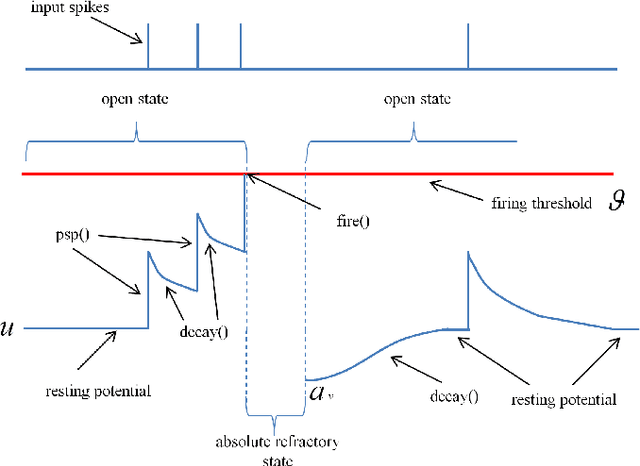

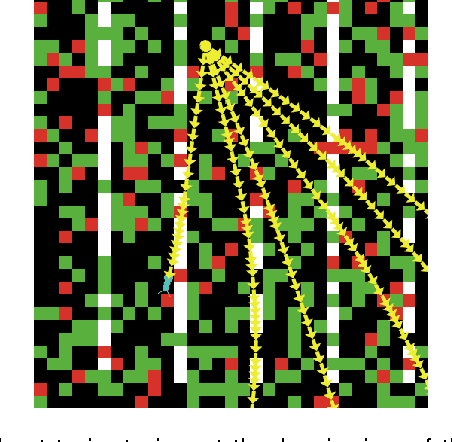

Abstract:A model of an Ant System where ants are controlled by a spiking neural circuit and a second order pheromone mechanism in a foraging task is presented. A neural circuit is trained for individual ants and subsequently the ants are exposed to a virtual environment where a swarm of ants performed a resource foraging task. The model comprises an associative and unsupervised learning strategy for the neural circuit of the ant. The neural circuit adapts to the environment by means of classical conditioning. The initially unknown environment includes different types of stimuli representing food and obstacles which, when they come in direct contact with the ant, elicit a reflex response in the motor neural system of the ant: moving towards or away from the source of the stimulus. The ants are released on a landscape with multiple food sources where one ant alone would have difficulty harvesting the landscape to maximum efficiency. The introduction of a double pheromone mechanism yields better results than traditional ant colony optimization strategies. Traditional ant systems include mainly a positive reinforcement pheromone. This approach uses a second pheromone that acts as a marker for forbidden paths (negative feedback). This blockade is not permanent and is controlled by the evaporation rate of the pheromones. The combined action of both pheromones acts as a collective stigmergic memory of the swarm, which reduces the search space of the problem. This paper explores how the adaptation and learning abilities observed in biologically inspired cognitive architectures is synergistically enhanced by swarm optimization strategies. The model portraits two forms of artificial intelligent behaviour: at the individual level the spiking neural network is the main controller and at the collective level the pheromone distribution is a map towards the solution emerged by the colony.
Traversing News with Ant Colony Optimisation and Negative Pheromones
May 24, 2014Abstract:The past decade has seen the rapid development of the online newsroom. News published online are the main outlet of news surpassing traditional printed newspapers. This poses challenges to the production and to the consumption of those news. With those many sources of information available it is important to find ways to cluster and organise the documents if one wants to understand this new system. A novel bio inspired approach to the problem of traversing the news is presented. It finds Hamiltonian cycles over documents published by the newspaper The Guardian. A Second Order Swarm Intelligence algorithm based on Ant Colony Optimisation was developed that uses a negative pheromone to mark unrewarding paths with a "no-entry" signal. This approach follows recent findings of negative pheromone usage in real ants.
Second Order Swarm Intelligence
Jun 13, 2013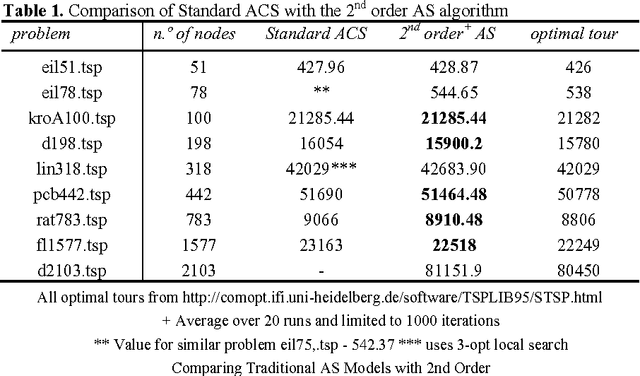
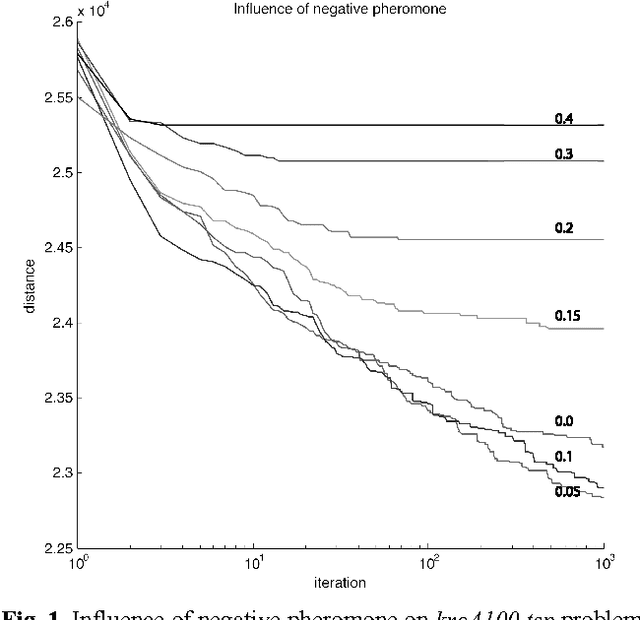
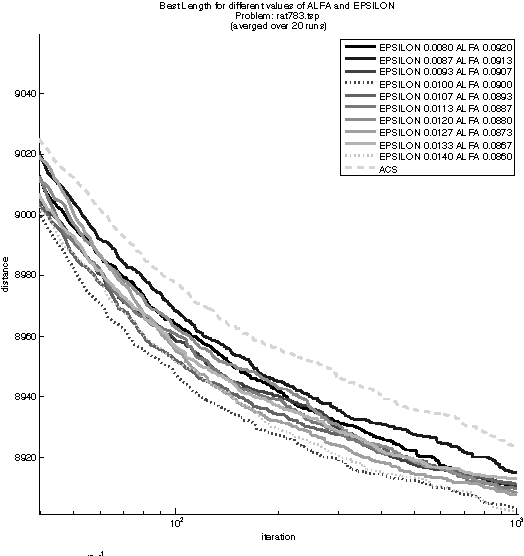
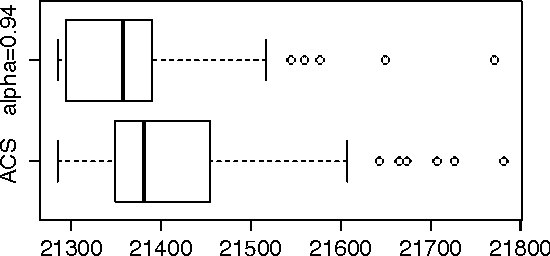
Abstract:An artificial Ant Colony System (ACS) algorithm to solve general-purpose combinatorial Optimization Problems (COP) that extends previous AC models [21] by the inclusion of a negative pheromone, is here described. Several Travelling Salesman Problem (TSP) were used as benchmark. We show that by using two different sets of pheromones, a second-order co-evolved compromise between positive and negative feedbacks achieves better results than single positive feedback systems. The algorithm was tested against known NP-complete combinatorial Optimization Problems, running on symmetrical TSP's. We show that the new algorithm compares favourably against these benchmarks, accordingly to recent biological findings by Robinson [26,27], and Gruter [28] where "No entry" signals and negative feedback allows a colony to quickly reallocate the majority of its foragers to superior food patches. This is the first time an extended ACS algorithm is implemented with these successful characteristics.
Computational Chemotaxis in Ants and Bacteria over Dynamic Environments
Dec 05, 2007



Abstract:Chemotaxis can be defined as an innate behavioural response by an organism to a directional stimulus, in which bacteria, and other single-cell or multicellular organisms direct their movements according to certain chemicals in their environment. This is important for bacteria to find food (e.g., glucose) by swimming towards the highest concentration of food molecules, or to flee from poisons. Based on self-organized computational approaches and similar stigmergic concepts we derive a novel swarm intelligent algorithm. What strikes from these observations is that both eusocial insects as ant colonies and bacteria have similar natural mechanisms based on stigmergy in order to emerge coherent and sophisticated patterns of global collective behaviour. Keeping in mind the above characteristics we will present a simple model to tackle the collective adaptation of a social swarm based on real ant colony behaviors (SSA algorithm) for tracking extrema in dynamic environments and highly multimodal complex functions described in the well-know De Jong test suite. Later, for the purpose of comparison, a recent model of artificial bacterial foraging (BFOA algorithm) based on similar stigmergic features is described and analyzed. Final results indicate that the SSA collective intelligence is able to cope and quickly adapt to unforeseen situations even when over the same cooperative foraging period, the community is requested to deal with two different and contradictory purposes, while outperforming BFOA in adaptive speed. Results indicate that the present approach deals well in severe Dynamic Optimization problems.
Self-Regulated Artificial Ant Colonies on Digital Image Habitats
Dec 01, 2005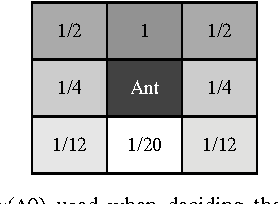


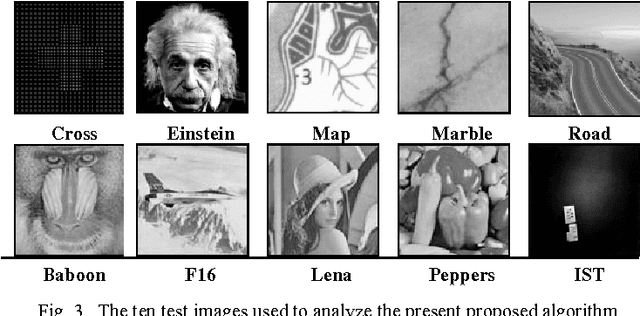
Abstract:Artificial life models, swarm intelligent and evolutionary computation algorithms are usually built on fixed size populations. Some studies indicate however that varying the population size can increase the adaptability of these systems and their capability to react to changing environments. In this paper we present an extended model of an artificial ant colony system designed to evolve on digital image habitats. We will show that the present swarm can adapt the size of the population according to the type of image on which it is evolving and reacting faster to changing images, thus converging more rapidly to the new desired regions, regulating the number of his image foraging agents. Finally, we will show evidences that the model can be associated with the Mathematical Morphology Watershed algorithm to improve the segmentation of digital grey-scale images. KEYWORDS: Swarm Intelligence, Perception and Image Processing, Pattern Recognition, Mathematical Morphology, Social Cognitive Maps, Social Foraging, Self-Organization, Distributed Search.
* 8 pages, 17 figures, full pictures in http://alfa.ist.utl.pt/~cvrm/staff/vramos/Vramos-WCLC05b.pdf
Societal Implicit Memory and his Speed on Tracking Extrema over Dynamic Environments using Self-Regulatory Swarms
Dec 01, 2005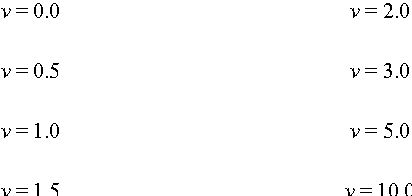
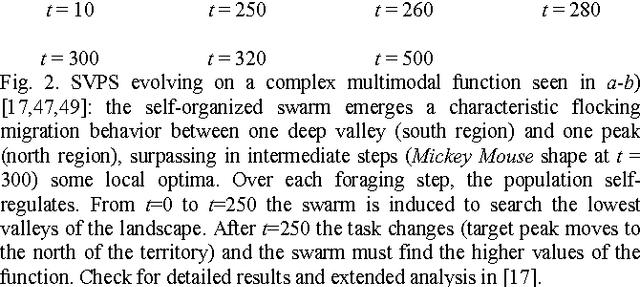
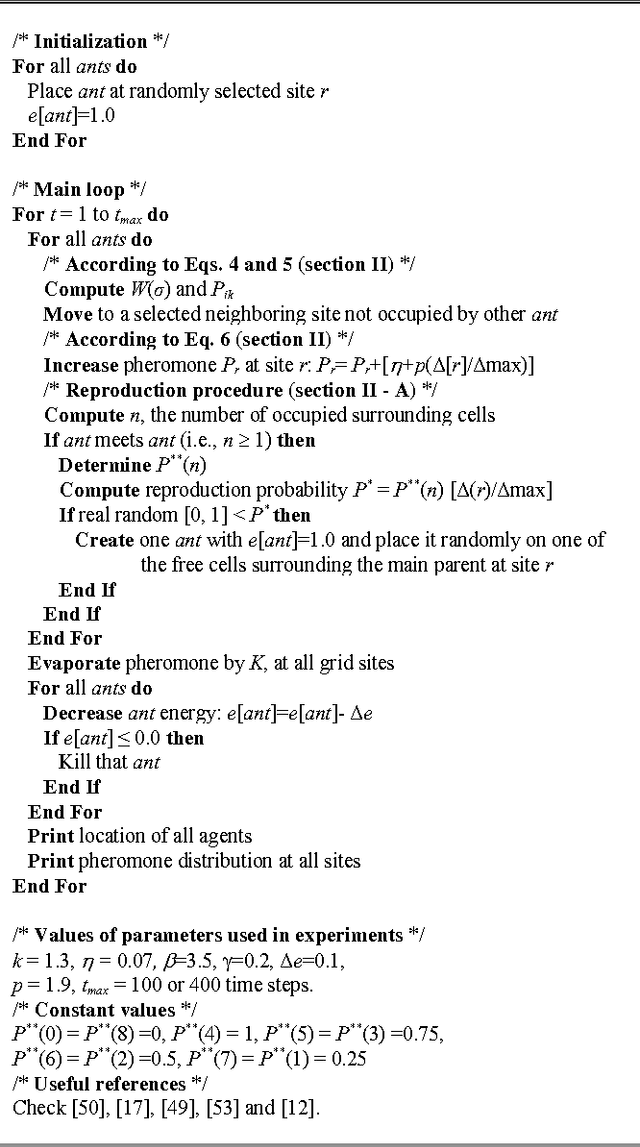

Abstract:In order to overcome difficult dynamic optimization and environment extrema tracking problems, We propose a Self-Regulated Swarm (SRS) algorithm which hybridizes the advantageous characteristics of Swarm Intelligence as the emergence of a societal environmental memory or cognitive map via collective pheromone laying in the landscape (properly balancing the exploration/exploitation nature of our dynamic search strategy), with a simple Evolutionary mechanism that trough a direct reproduction procedure linked to local environmental features is able to self-regulate the above exploratory swarm population, speeding it up globally. In order to test his adaptive response and robustness, we have recurred to different dynamic multimodal complex functions as well as to Dynamic Optimization Control problems, measuring reaction speeds and performance. Final comparisons were made with standard Genetic Algorithms (GAs), Bacterial Foraging strategies (BFOA), as well as with recent Co-Evolutionary approaches. SRS's were able to demonstrate quick adaptive responses, while outperforming the results obtained by the other approaches. Additionally, some successful behaviors were found. One of the most interesting illustrate that the present SRS collective swarm of bio-inspired ant-like agents is able to track about 65% of moving peaks traveling up to ten times faster than the velocity of a single individual composing that precise swarm tracking system.
On Self-Regulated Swarms, Societal Memory, Speed and Dynamics
Dec 01, 2005


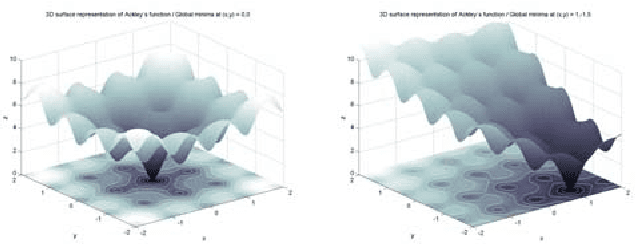
Abstract:We propose a Self-Regulated Swarm (SRS) algorithm which hybridizes the advantageous characteristics of Swarm Intelligence as the emergence of a societal environmental memory or cognitive map via collective pheromone laying in the landscape (properly balancing the exploration/exploitation nature of our dynamic search strategy), with a simple Evolutionary mechanism that trough a direct reproduction procedure linked to local environmental features is able to self-regulate the above exploratory swarm population, speeding it up globally. In order to test his adaptive response and robustness, we have recurred to different dynamic multimodal complex functions as well as to Dynamic Optimization Control problems, measuring reaction speeds and performance. Final comparisons were made with standard Genetic Algorithms (GAs), Bacterial Foraging strategies (BFOA), as well as with recent Co-Evolutionary approaches. SRS's were able to demonstrate quick adaptive responses, while outperforming the results obtained by the other approaches. Additionally, some successful behaviors were found. One of the most interesting illustrate that the present SRS collective swarm of bio-inspired ant-like agents is able to track about 65% of moving peaks traveling up to ten times faster than the velocity of a single individual composing that precise swarm tracking system.
Less is More - Genetic Optimisation of Nearest Neighbour Classifiers
Dec 17, 2004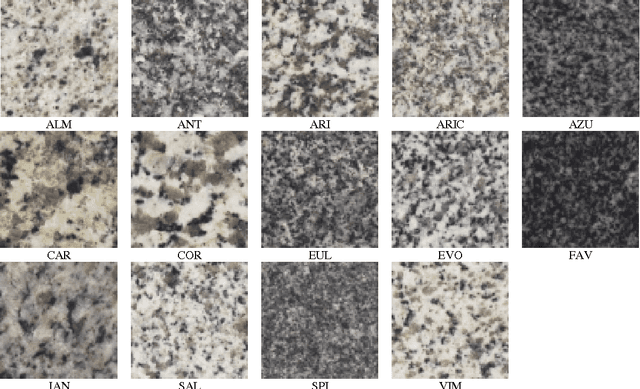
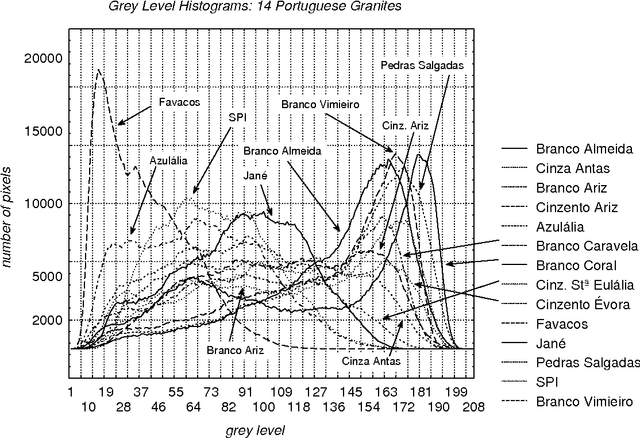
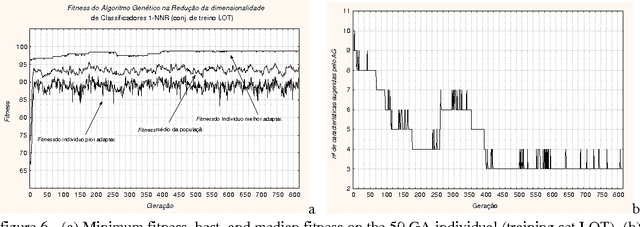
Abstract:The present paper deals with optimisation of Nearest Neighbour rule Classifiers via Genetic Algorithms. The methodology consists on implement a Genetic Algorithm capable of search the input feature space used by the NNR classifier. Results show that is adequate to perform feature reduction and simultaneous improve the Recognition Rate. Some practical examples prove that is possible to Recognise Portuguese Granites in 100%, with only 3 morphological features (from an original set of 117 features), which is well suited for real time applications. Moreover, the present method represents a robust strategy to understand the proper nature of the images treated, and their discriminant features. KEYWORDS: Feature Reduction, Genetic Algorithms, Nearest Neighbour Rule Classifiers (k-NNR).
* 9 pages, 7 figures, Author at http://alfa.ist.utl.pt/~cvrm/staff/vramos/ref_13.html
From Feature Extraction to Classification: A multidisciplinary Approach applied to Portuguese Granites
Dec 17, 2004

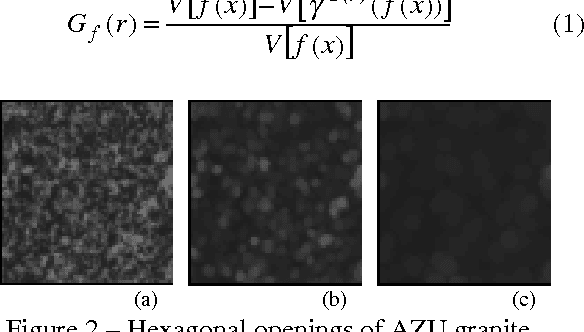
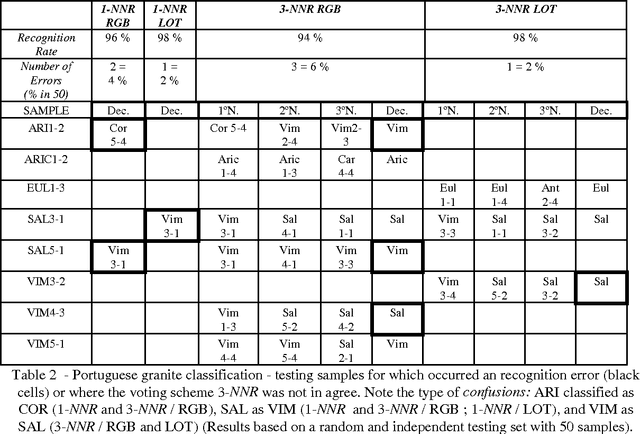
Abstract:The purpose of this paper is to present a complete methodology based on a multidisciplinary approach, that goes from the extraction of features till the classification of a set of different portuguese granites. The set of tools to extract the features that characterise polished surfaces of the granites is mainly based on mathematical morphology. The classification methodology is based on a genetic algorithm capable of search the input feature space used by the nearest neighbour rule classifier. Results show that is adequate to perform feature reduction and simultaneous improve the recognition rate. Moreover, the present methodology represents a robust strategy to understand the proper nature of the images treated, and their discriminant features. KEYWORDS: Portuguese grey granites, feature extraction, mathematical morphology, feature reduction, genetic algorithms, nearest neighbour rule classifiers (k-NNR).
* 8 pages, 6 figures, Author at http://alfa.ist.utl.pt/~cvrm/staff/vramos/ref_21.html
On Image Filtering, Noise and Morphological Size Intensity Diagrams
Dec 17, 2004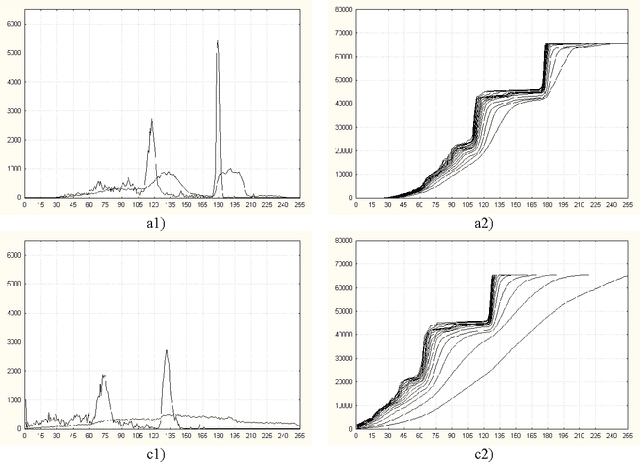

Abstract:In the absence of a pure noise-free image it is hard to define what noise is, in any original noisy image, and as a consequence also where it is, and in what amount. In fact, the definition of noise depends largely on our own aim in the whole image analysis process, and (perhaps more important) in our self-perception of noise. For instance, when we perceive noise as disconnected and small it is normal to use MM-ASF filters to treat it. There is two evidences of this. First, in many instances there is no ideal and pure noise-free image to compare our filtering process (nothing but our self-perception of its pure image); second, and related with this first point, MM transformations that we chose are only based on our self - and perhaps - fuzzy notion. The present proposal combines the results of two MM filtering transformations (FT1, FT2) and makes use of some measures and quantitative relations on their Size/Intensity Diagrams to find the most appropriate noise removal process. Results can also be used for finding the most appropriate stop criteria, and the right sequence of MM operators combination on Alternating Sequential Filters (ASF), if these measures are applied, for instance, on a Genetic Algorithm's target function.
* 9 pages, 4 figures, Author at http://alfa.ist.utl.pt/~cvrm/staff/vramos/ref_25.html
 Add to Chrome
Add to Chrome Add to Firefox
Add to Firefox Add to Edge
Add to Edge